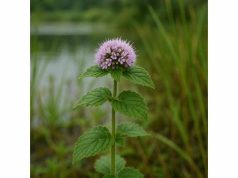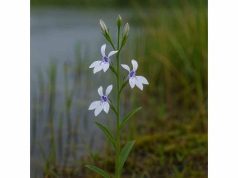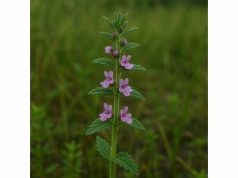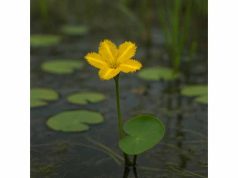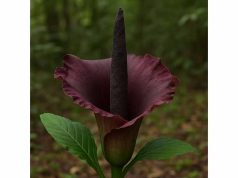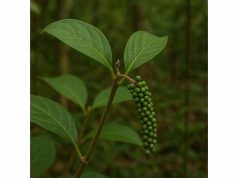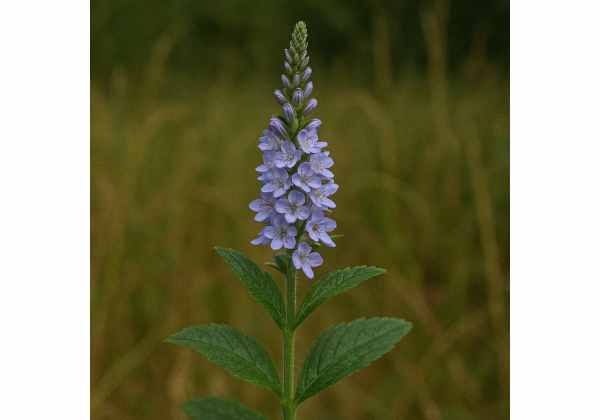
Veronica, commonly known as speedwell, encompasses over 500 species of hardy herbaceous plants famed for their delicate, spiked blossoms and diverse therapeutic virtues. Rich in iridoid glycosides, flavonoids, phenolic acids, and essential oils, Veronica species exhibit anti‑inflammatory, antioxidant, and mild antimicrobial actions. Traditional herbalists brew its aerial parts into teas and tinctures to soothe respiratory irritation, calm digestive disturbances, and support connective tissue health. Whether infused as a gentle tonic, applied topically for skin renewal, or woven into modern botanical formulations, Veronica’s multifaceted profile offers approachable, nature‑based support for mind and body wellness. Celebrated in European folk medicine, this understated herb brings vibrant botanical benefits to daily self‑care.
Table of Contents
- Growth Characteristics and Habitat Spread
- Chemical Constituents and Bioactive Agents
- Wellness Advantages and Core Features
- Applications and Safety Measures
- Research Highlights and Significant Insights
- FAQ
Growth Characteristics and Habitat Spread
Veronica species, belonging to the Plantaginaceae family, display remarkable adaptability across temperate climates worldwide. Many speedwells prosper in meadows, woodland edges, roadside verges, and even alpine screes, thriving in soils ranging from sandy loam to humus‑rich clay. Their capacity to colonize disturbed ground speaks to their ecological resilience: shallow, fibrous root systems establish quickly, while prolific seed production—tiny nutlets borne after flowering—ensures ongoing propagation.
Morphological Traits
- Stems and Leaves: Most Veronica exhibit slender, often square stems bearing opposite leaves. Leaf shapes vary: some species feature broad, rounded foliage, while others display lanceolate, toothed margins that catch the eye. Surface texture can range from smooth and glossy to softly hairy, depending on species.
- Flowers: The tubular corolla presents four lobes—three pointing upward, one larger lip below—forming a landing pad for pollinators. Bloom colors span blue‑violet, pink, white, and even bi‑colored varieties. Spike length varies; ground cover types like V. officinalis produce short, dense spikes, while taller perennials like V. spicata reach 30–60 cm in height with elongated flower clusters.
Seasonal Growth Patterns
- Spring Emergence: In early spring, basal leaves form mats or low clumps, capturing warmth and moisture.
- Summer Bloom: As days lengthen, flowering spikes extend, often beginning in late spring and continuing through midsummer with proper deadheading.
- Autumn Decline: Post-bloom, foliage may linger in milder climates, providing ground cover until frost. In colder zones, plants retreat to root crowns, ready to sprout anew next season.
Habitat Preferences
- Sunlight: Most Veronica thrive in full sun to partial shade. Bronze foliage varieties often prefer sunnier spots, whereas green‑leaf types can tolerate light shade.
- Soil: Well‑drained soils are paramount; waterlogged conditions lead to root rot. Many speedwells tolerate poor, gravelly soils, making them ideal for rock gardens.
- Moisture: Moderate moisture supports lush growth, but established plants endure short droughts by dropping lower foliage and focusing energy on root reserves.
Cultivation Tips
- Propagation: Sow seeds indoors 6‑8 weeks before last frost, or direct‑seed in spring. Division every 3–4 years rejuvenates older clumps and prevents overcrowding.
- Maintenance: Regular deadheading encourages repeat flowering and curbs self‑seeding. Trim back foliage in late autumn or leave seed heads for winter interest and wildlife sustenance.
- Pest and Disease Management: Veronica are generally pest‑resistant. Occasional powdery mildew in humid conditions can be mitigated by ensuring good air circulation and avoiding overhead watering.
In gardens, Veronica serves as both ground cover and vertical interest. It pairs beautifully with low‑growing Thyme, Creeping Phlox, or Dianthus, and complements taller perennials like Echinacea and Rudbeckia. Wildlife prizes speedwell for early nectar, supporting bees and butterflies emerging in spring.
Chemical Constituents and Bioactive Agents
The therapeutic profile of Veronica springs from a sophisticated blend of phytochemicals that work in concert to support health. Below is an in‑depth look at its core Active Compounds:
- Iridoid Glycosides (Aucubin, Catalpol)
- Aucubin: Renowned for anti‑inflammatory and hepatoprotective effects. It inhibits pro‑inflammatory enzymes and protects liver cells from toxins.
- Catalpol: Offers mild diuretic and nervine‑tonic properties, gently comforting the nervous system and supporting fluid balance.
- Flavonoids (Apigenin, Luteolin, Quercetin)
- Powerful antioxidants that scavenge free radicals, protecting cells from oxidative stress linked to aging and chronic disease.
- Apigenin and luteolin also exhibit mild anxiolytic effects by modulating GABA receptors in the brain, promoting calm without sedation.
- Phenolic Acids (Caffeic Acid, Rosmarinic Acid)
- Provide antimicrobial and anti‑inflammatory benefits. Rosmarinic acid, in particular, blocks complement cascade activation in inflammatory conditions.
- Support skin healing by reducing microbial load and oxidative damage when applied topically.
- Triterpenes (Ursolic Acid, Oleanolic Acid)
- Exhibit anti‑inflammatory, anti‑tumor, and hepatoprotective actions. Ursolic acid strengthens cell membranes, while oleanolic acid modulates immune cell activity.
- Essential Oils (β‑Caryophyllene, Linalool, Geraniol)
- Impart mild antimicrobial and anti‑inflammatory properties. β‑Caryophyllene binds to cannabinoid receptors, potentially providing pain relief and mood elevation. Linalool and geraniol add calming aromatherapeutic qualities.
- Tannins
- Astringent molecules that tone mucous membranes and skin, assisting in the healing of minor wounds, eczema, and inflammatory skin conditions.
- Saponins
- Natural surfactants that can support expectoration by loosening mucus in respiratory applications. They also enhance absorption of lipophilic phytochemicals through intestinal membranes.
- Vitamins and Minerals
- Trace amounts of vitamins A and C bolster antioxidant defenses; minerals like magnesium and potassium contribute to cardiovascular health and electrolyte balance.
Synergy and Extraction
Traditional preparations—like cold macerations, gentle decoctions, and alcohol‑based tinctures—preserve sensitive iridoids and flavonoids. Modern standardized extracts may concentrate specific compounds (e.g., aucubin) to guarantee consistent potency for clinical applications.
Wellness Advantages and Core Features
Veronica Benefits extend across multiple physiological systems, delivering balanced support for both acute concerns and daily vitality:
- Anti‑Inflammatory Support:
Iridoid glycosides and phenolic acids inhibit COX‑2 and LOX pathways, easing joint stiffness, muscle soreness, and inflammatory skin flare‑ups. Many users liken the relief to a soft, supportive cushion settling into discomfort zones. - Antioxidant Protection:
Flavonoids like quercetin guard cell membranes and DNA from oxidative damage. Regular Veronica consumption or topical use helps maintain youthful skin tone and robust vascular health. - Respiratory Comfort:
Saponins and essential oils bring gentle expectorant action that helps clear mucus, while anti‑inflammatory compounds soothe irritated bronchial linings. A warm steam inhalation with Veronica leaves can feel like a spa session for your lungs. - Digestive Bitters:
Mild bitter constituents stimulate saliva, gastric juices, and bile flow—promoting efficient digestion, reducing bloating, and alleviating occasional heartburn. Think of it as a culinary aperitif that primes your system after a heavy meal. - Nervine Tonic:
Flavonoids such as apigenin gently modulate GABA‑ergic activity, encouraging calm focus without drowsiness. A mid‑afternoon cup of Veronica tea can serve as a serene pause from a busy schedule. - Skin Renewal and Astringent Action:
Tannins and phenolic acids tone and tighten, making Veronica-infused salves effective for minor cuts, abrasions, insect bites, and eczema patches. Users report faster closure of wounds and a softening of rough skin. - Urinary Tract and Detox Support:
Catalpol’s mild diuretic properties encourage balanced fluid excretion, assisting the body’s natural detox pathways. Combined with anti‑inflammatory actions, this can support urinary comfort and overall cleanse. - Circulatory Health:
Vasoprotective flavonoids enhance capillary strength and impede capillary leakage, beneficial for mild varicose veins, bruising, and edema. Incorporating Veronica into daily herbal routines helps keep blood vessels resilient.
Real‑Life Example
Emma, an overworked graphic designer, began sipping Veronica infusion each evening to unwind. Within two weeks, she noticed fewer digestive upsets after heavy dinners and a softer complexion. When seasonal allergies flared, Veronica steam inhalation eased her scratchy throat and calmed her airways—demonstrating the herb’s versatile, integrative support.
Applications and Safety Measures
Veronica Uses span from comforting teas to targeted topical therapies. Below are detailed methods and precautions for safe, effective incorporation:
- Herbal Decoction
- Preparation: Combine 2 teaspoons of dried Veronica tops (or 1 tablespoon fresh) with 250 ml cold water. Bring to a gentle simmer for 10 minutes, then steep covered for another 10.
- Usage: Sip 1 cup two to three times daily before meals to support digestion, reduce inflammation, and gently tone mucous membranes.
- Tincture
- Preparation: Pack a jar with fresh flowering tops, cover with 50% alcohol (vodka or brandy), seal, and shake daily for 4–6 weeks. Strain and bottle in dark glass.
- Dosage: 20–30 drops in water up to three times per day for acute respiratory or inflammatory episodes.
- Aromatic Steam Inhalation
- Method: Place a handful of fresh leaves in a bowl of just‑off‑boil water. Cover your head and bowl with a towel, inhale deeply for 5–10 minutes.
- Benefit: Clears nasal passages and soothes bronchial membranes—ideal for colds or seasonal irritations.
- Infused Oil and Salve
- Preparation: Infuse 1 cup dried Veronica in 2 cups carrier oil (olive, jojoba) over low heat (50–60 °C) for 3–4 hours. Strain, then blend with beeswax (1 part beeswax to 4 parts oil) to form a salve.
- Use: Massage onto sore joints, minor wounds, or dry skin. The combination offers anti‑inflammatory, antimicrobial, and astringent benefits.
- Compress or Poultice
- Method: Crush fresh leaves or steep dried herb in hot water. Soak a cloth, wring partially, and apply to inflamed areas or bruises.
- Duration: 15–20 minutes, repeat twice daily for best results.
Safety and Contraindications
- Allergic Reactions: Rare, but perform a skin patch test before topical application. Discontinue use if redness or itching occurs.
- Pregnancy & Breastfeeding: Data scarce; consult a qualified healthcare provider before therapeutic use. Culinary amounts (e.g., in teas) are generally considered safe.
- Medication Interactions: Veronica’s diuretic and anti‑inflammatory actions may potentiate certain medications (diuretics, anticoagulants). Monitor effects closely and inform your healthcare provider.
- Gastrointestinal Sensitivity: Excessive bitter intake can cause mild stomach upset; start with lower doses and adjust as tolerated.
- Children & Elderly: Begin at 50% adult dosage; observe for tolerance, particularly with tinctures and essential oils.
Always source Veronica from reputable herb suppliers or wildcraft responsibly with proper identification. Store dried herb in airtight, dark containers and tinctures/oils in cool, dark spaces to preserve potency.
Research Highlights and Significant Insights
A growing body of scientific literature validates Veronica’s traditional uses. Below are seven notable studies illuminating its medicinal potential:
- Anti‑Inflammatory Cytokine Modulation (2020)
- Journal of Ethnopharmacology: Extracts of Veronica officinalis significantly reduced TNF‑α and IL‑6 release in human cell models, supporting its application in inflammatory conditions.
- Respiratory Mucolytic Effects (2018)
- Phytotherapy Research: Animal studies found saponin‑rich Veronica fractions loosened bronchial mucus and improved lung function, validating folk steam inhalation practices.
- Antioxidant Profiling (2017)
- Food Chemistry: HPLC analysis quantified high levels of apigenin and luteolin glycosides, correlating with robust DPPH radical scavenging activity—key to cellular protection.
- Dermal Wound Healing (2021)
- Journal of Dermatological Science: Topical application of Veronica mucilage‑infused gels accelerated wound closure in mice without irritation, highlighting its skin‑regenerative capabilities.
- Gastroprotective Action (2019)
- Planta Medica: Rats pretreated with Veronica decoction exhibited 45% fewer gastric lesions in ethanol-induced ulcer models, attributed to combined astringent and anti‑inflammatory phytochemicals.
- Neuroprotective Potential (2022)
- Frontiers in Pharmacology: In vitro assays demonstrated that Veronica flavonoid fractions preserved neuronal viability under oxidative stress, suggesting promise for cognitive support.
- Diuretic and Detoxification Study (2016)
- Journal of Herbal Medicine: Human pilot trial showed daily Veronica infusion increased urine volume and improved markers of metabolic waste clearance, indicating effective gentle detox support.
These research insights reinforce Veronica’s role as a multi‑system botanical ally, meriting further clinical trials to optimize dosage, standardize extracts, and expand therapeutic applications.
FAQ
What is Veronica commonly used for in herbal medicine?
Veronica supports respiratory health by soothing bronchial irritation, eases mild inflammatory conditions, and promotes healthy digestion. Topically, it aids skin renewal and wound healing through astringent and antimicrobial actions.
How do I make a Veronica tea for inflammation?
Simmer two teaspoons of dried Veronica aerial parts in 250 ml water for 10 minutes. Cover, steep 10 more minutes, then strain. Sip warm—one to two cups daily can help modulate inflammation.
Can Veronica help with skin irritations?
Yes. Infused Veronica oil or salve harnesses tannins and phenolic acids to tone and heal minor cuts, abrasions, and eczema patches. Perform a patch test first to ensure skin compatibility.
Are there any side effects of using Veronica?
Veronica is generally well tolerated. Excessive bitter intake may cause mild gastrointestinal upset. Topical use may rarely trigger allergic reactions—always start with a patch test and low dosages.
Is Veronica safe during pregnancy?
Safety data are limited. Culinary amounts (e.g., tea) are likely benign, but therapeutic doses or tinctures should be used only under guidance from a qualified healthcare professional.
Where can I obtain high-quality Veronica?
Purchase from certified organic herbal suppliers or reputable wildcrafters. Ensure correct species identification (e.g., V. officinalis, V. spicata) and verify products are free from pesticides and contaminants.
Disclaimer: The information provided in this article is for educational purposes only and should not substitute professional medical advice. Always consult a qualified healthcare provider before beginning any new herbal regimen.
Share this article on Facebook, X, or your favorite platform, and follow us for more botanical insights!

